How to make jam with Andrew Gravett
Make a pot of this tangy apricot jam with the help of expert pastry chef Andrew Gravett. Sweet, sticky, and delicious.
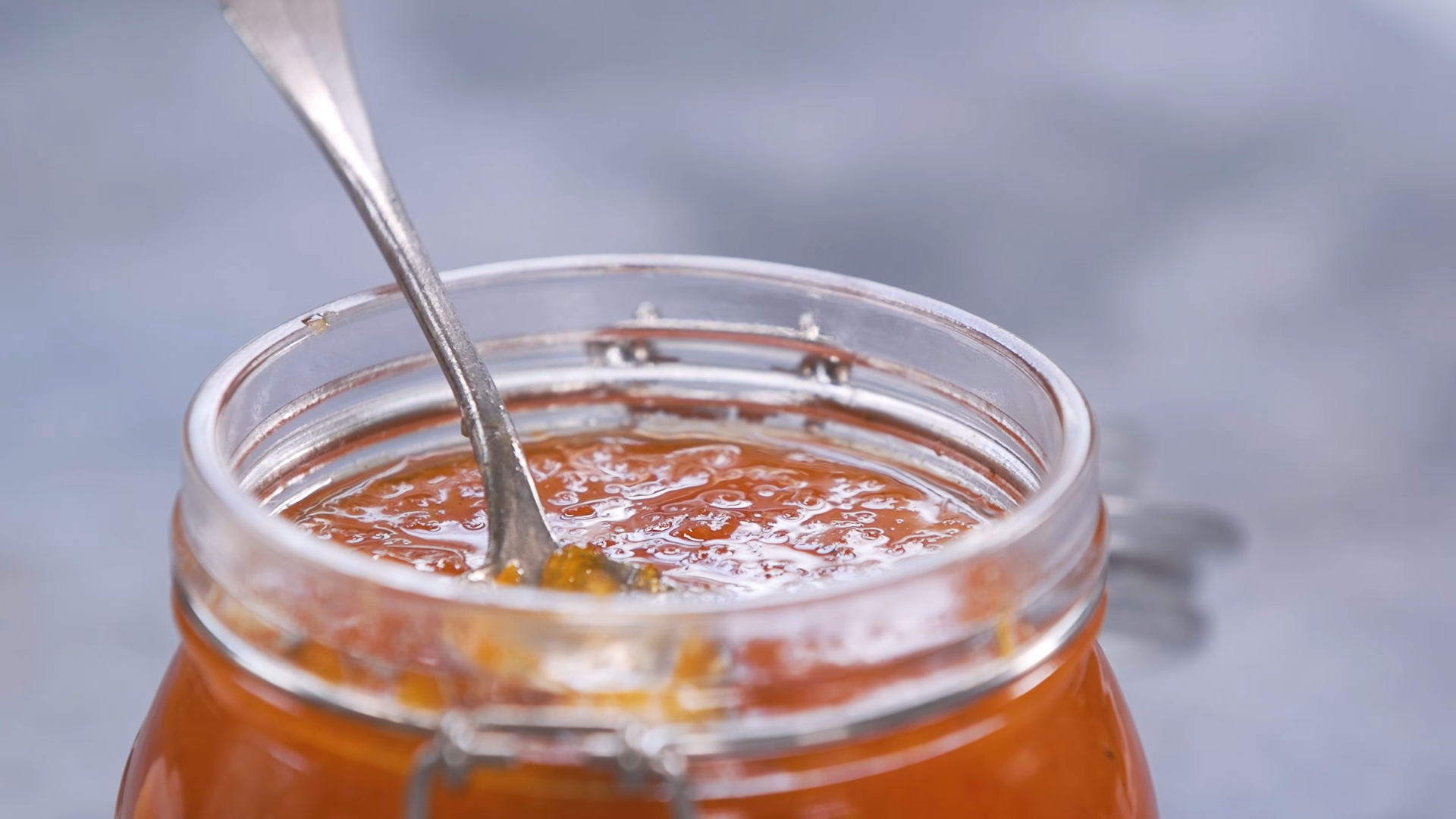

Rosie Conroy
We asked Andrew Gravett, the Executive Pastry chef at The Langham London, to share his favourite jam recipe with us, as well as top tips and a step-by-step guide on how to create apricot jam at home.
Andrew Gravett demonstrates how to make apricot jam with just a few ingredients, giving a gorgeous fresh-tasting jam in a few steps. Because the recipe is so simple the emphasis is on the ingredients and using the very best fruit you can find. Fresh, ripe apricots that are naturally sweet and perfumed will give you the most delicious end product, that is perfect for use in all types of baking.
We love this jam on freshly baked scones, for example, topped with clotted cream or even just generously spread on top of a thick piece of toast.
Preparation: For this recipe, we recommend making sure you have the right equipment. You will need a vegetable cutter or a grater setting on your food processor. If you don't have one of these not to worry, grate your apricots on the biggest side of your grater. Just expect for this job to take a little longer if so.
You will also need a digital food thermometer to make sure your syrup cooks to exactly 135°C and a ladle so that you can remove the foam that will form on top of your syrup and put the jam into your jars.
Andrew also suggests making sure your jam lasts really well you should sterilise jars and lids before making the jam. Clean the jars really well and pop them onto a baking tray and leave them in a hot oven for half an hour. Carefully remove from the oven and while everything is still hot pour the jam into the jars.
Another thing to note is that some of the ingredients used in this recipe may only be available in selected chain supermarkets or online like the pectin rapid set or acid citric.
Parenting advice, hot topics, best buys and family finance tips delivered straight to your inbox.
Watch expert pastry chef Andrew Gravett make the best apricot jam
Ingredients:
- 500g fresh apricot
- 250g glucose
- 250g caster sugar
- 75g water
- 1 vanilla pod
- 2.5g pectin rapid set
- 13g acid citric
How to make jam
Step 1
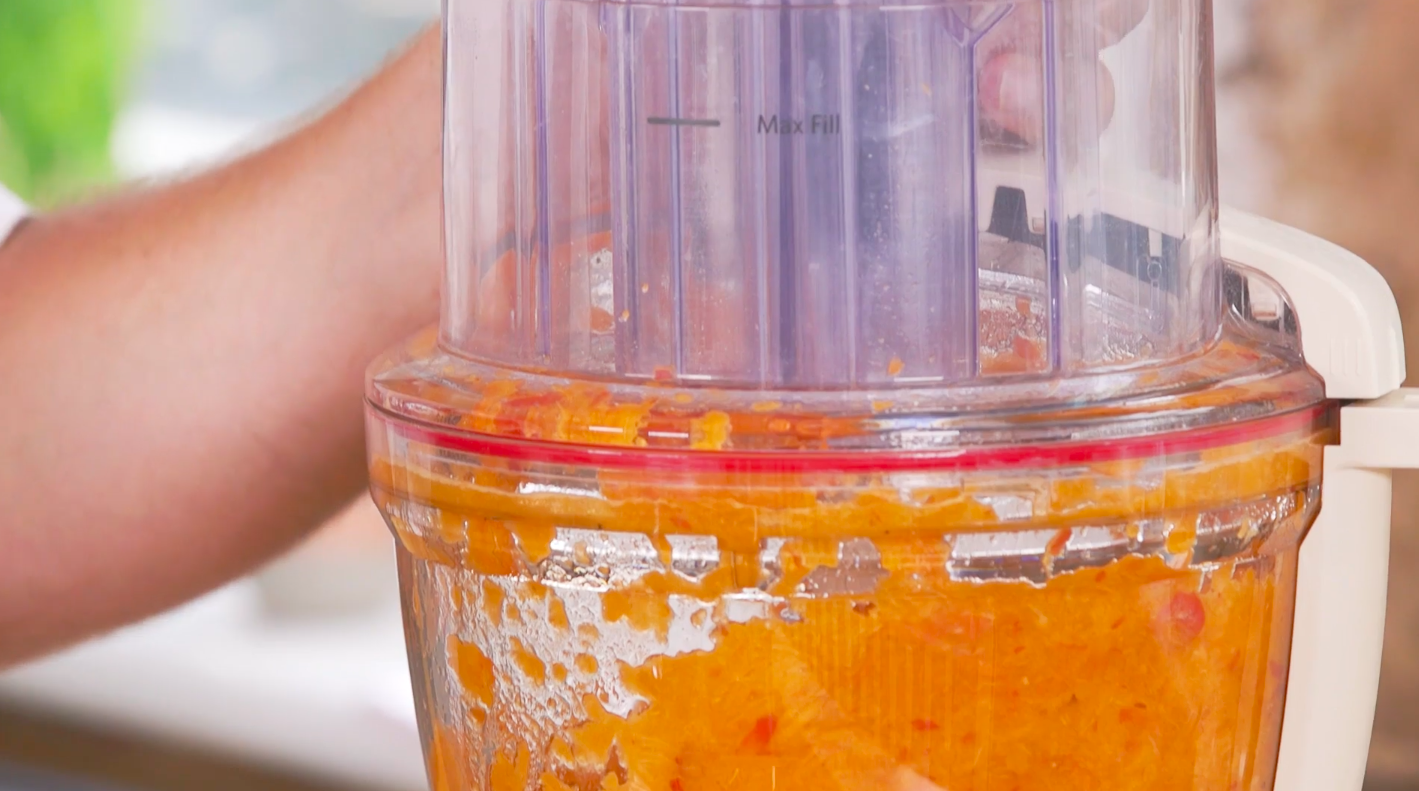
Destone and grate the apricots using a vegetable cutter or a grater setting on your food processor. If you don't have either of these, grate your apricots on the biggest side of your grater.
Step 2
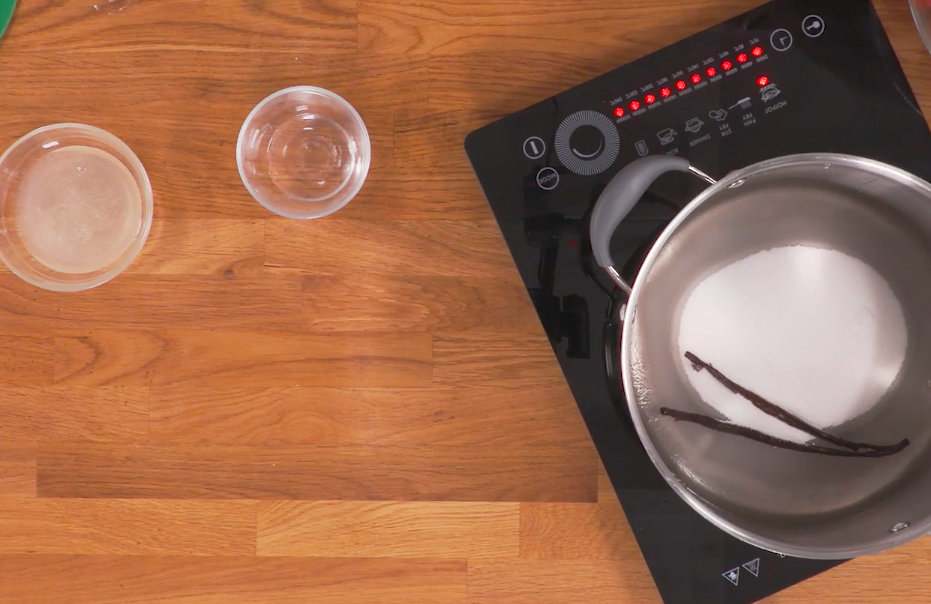
Mix in a bowl 2.5g pectin, 15g sugar, and 35g water. In a pan boil the sugar, the glucose, water and vanilla and cook to 135°C.
Step 3
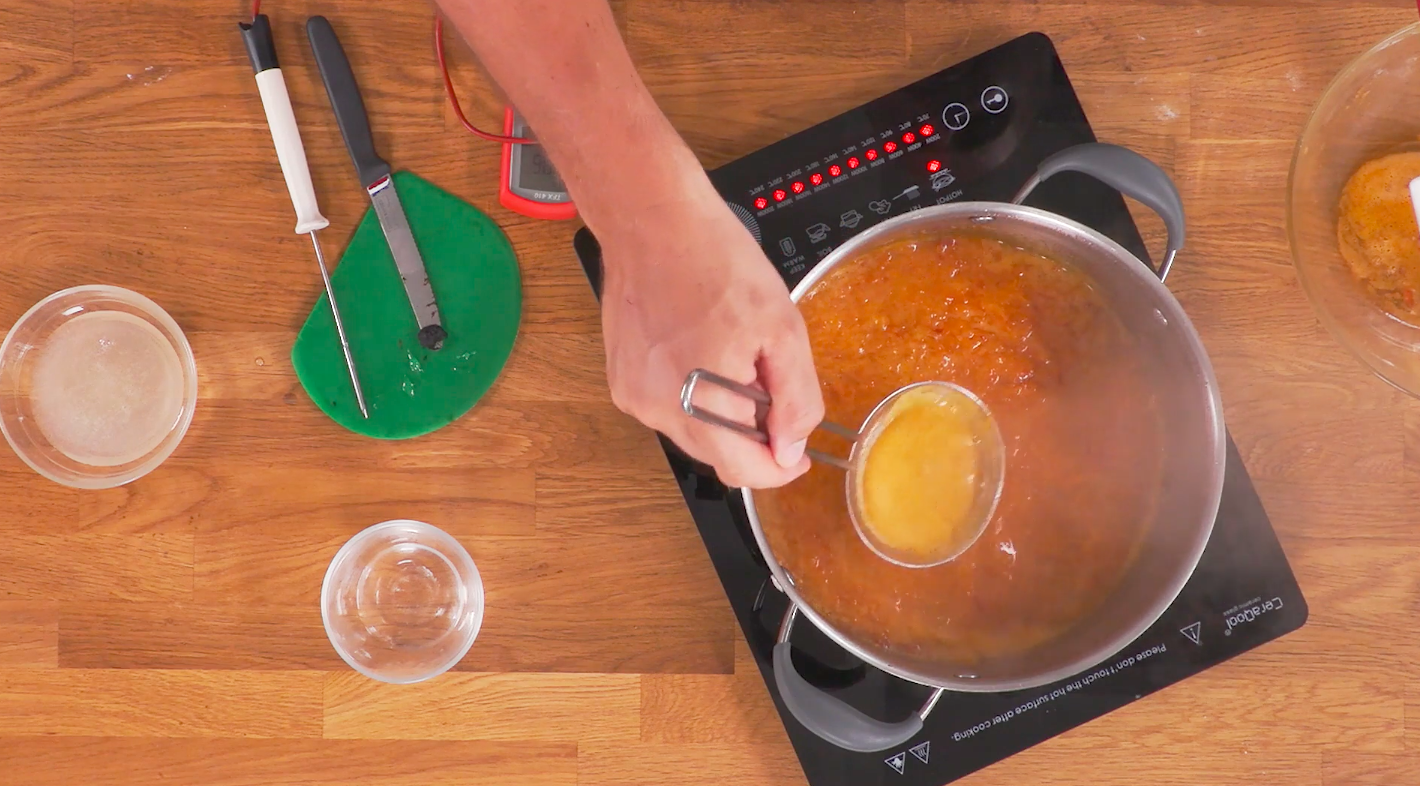
Add the fruit and cook the mix to 135°C.
Step 4
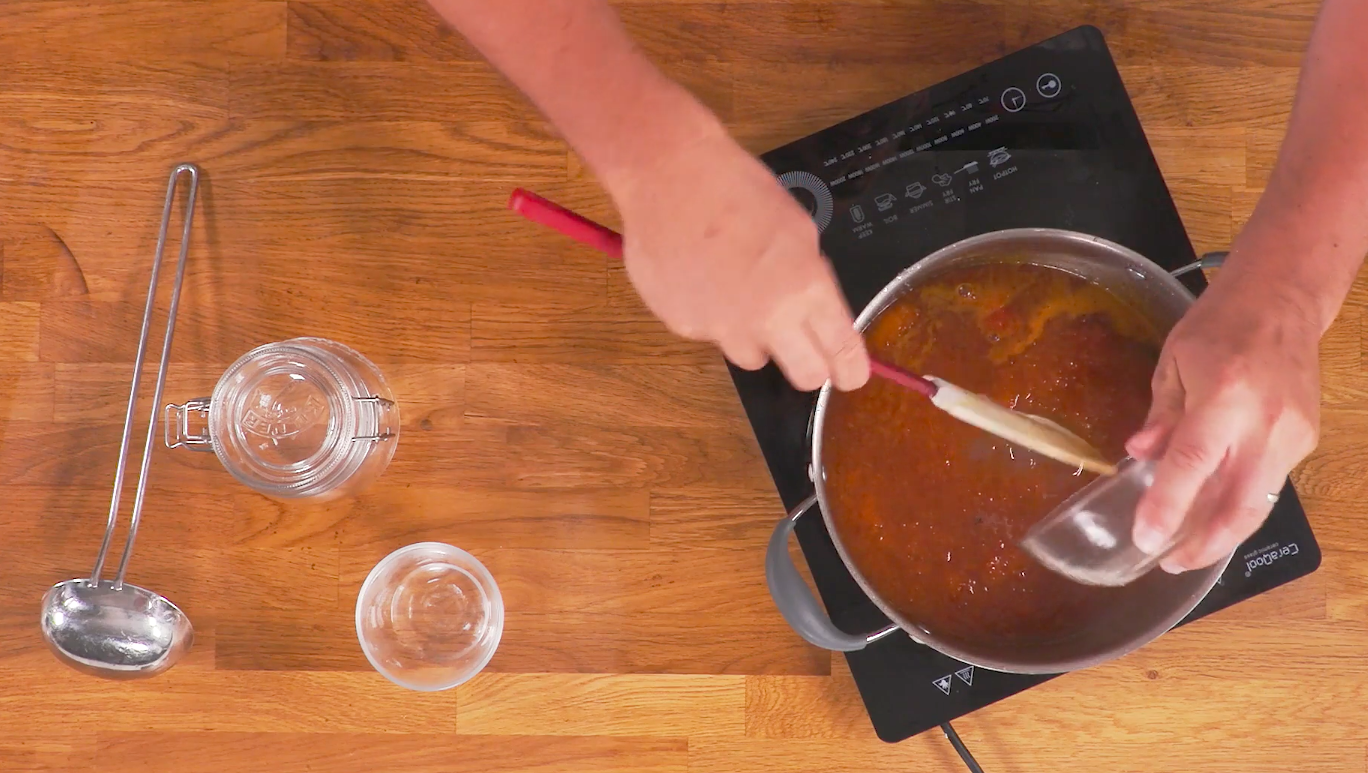
Add the pectin mix and cook again to 135°C.
Step 5
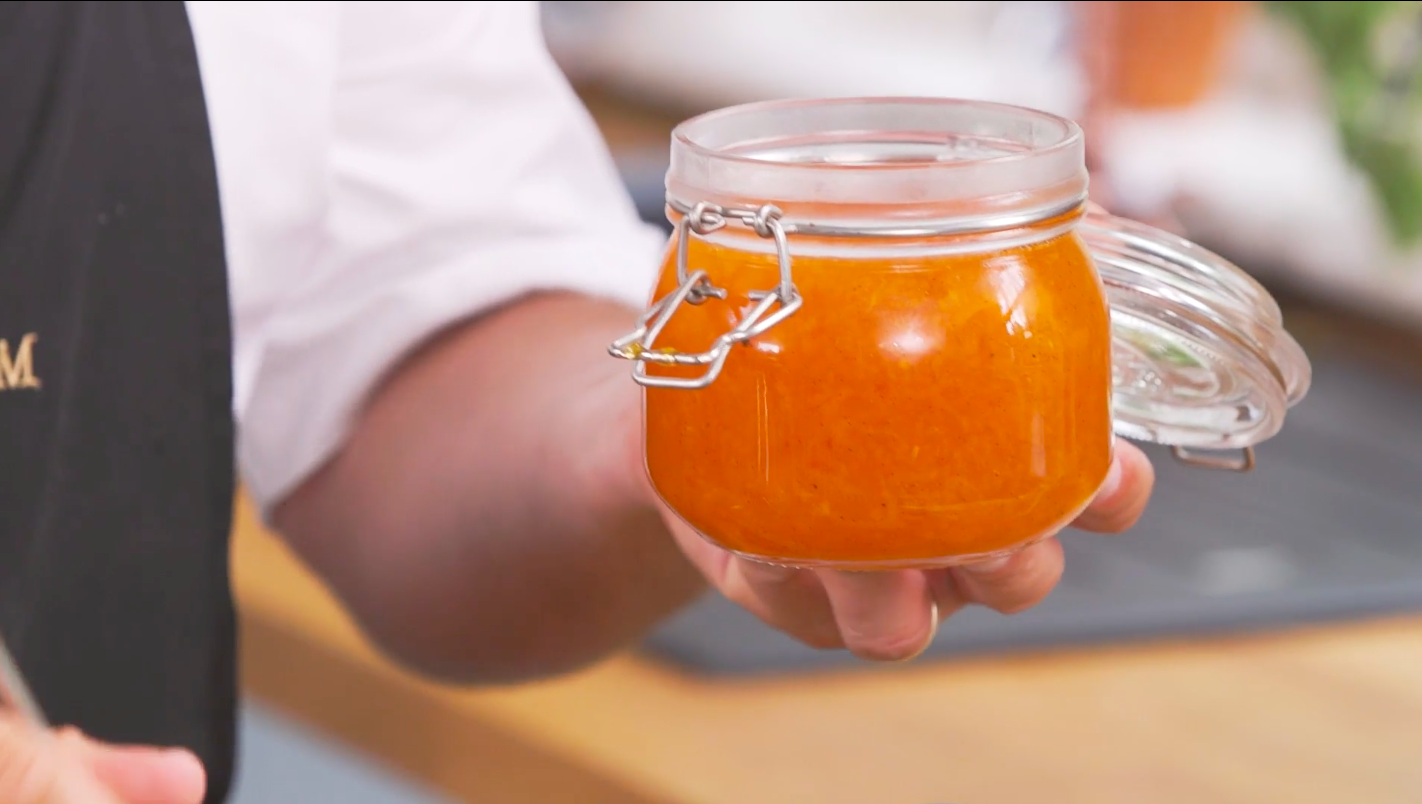
Remove from the heat and add the citric acid and stir through. Serve up your jam into your jars.
FAQs about making jam
How do I know if my jam is ready?
If you are still not sure your jam is ready after following Andrew’s instructions, follow these simple steps:
- You should first put cold spoons into the fridge before you start making your jam.
- When you are unsure whether your jam has got to setting point, you should take your jam off the hob and dip one of your cold spoons into your jam carefully.
- Tip the spoon to the side above the preserve looking carefully at it and making sure it doesn’t splash everywhere.
- If the liquid is dripping of the spoon then you will need cook it for a few minutes longer.
- If jam runs off like a ‘sheet’, (the droplets have joined together) then your boiling point has been reached and your jam is set.
How to store jam
You can store homemade jam in the fridge for up to three months. We suggest discarding any jars of jam that begin to grow mould on top.
Andrew suggests in this recipe to make sure that your storing jars are as a clean as possible before putting your jam inside them. Simply do this by heating up your jars in an oven at around 100°C , in order to kill any bacteria in them.
It also best to put your jam into your jars as soon as possible but you should leave at least 10% of air at the top of the jar, in order for it to cool and set.
Put the lid on really tight after filling up your jars and flip them upside down on a clean kitchen towel. After 10 minutes put the jam jars in the fridge and they should be completely set after 24-48 hours.
You can eat the jam straight away or let it set in the fridge, it is completely up to you and how you like your jam.
How to freeze jam
While homemade jam can already last a long time in the fridge, if stored correctly it can last even longer in the freezer for up to 12 months.
Just make sure to store your jam in a thick and sturdy jar and when filling the jar make sure there is enough space for the jam to expand when frozen. We suggest leaving an inch of space from the top of the jar.
Once you have filled your jar with your jam, close the jar with an airtight lid and place it in the middle or end of your freezer.
It is super easy to defrost your jam, just simply move your jar from the freezer to the fridge and leave it to thaw overnight.
If you need the jam sooner, you should submerge your frozen jam jar into a basin full of warm water. It should take at least half an hour to defrost the jam. However, once thawed you should re-freeze the jam.
Is homemade jam healthier?
Opting to make your own jam is much healthier than shop-bought as you have an element of control over the sugar content.
In terms of health benefits, the natural sugar in fruit is where the main health benefits stem from in homemade jam - unlike the synthetic or processed sugar in shop-bought jam. Homemade jam instead offers a more natural sweet element, which mixes with your blood to give you the right energy for your body.
Our best jam recipes

1. Raspberry jam
This simple raspberry jam is a real sweet treat and is super easy to make, using just three ingredients.
Get the recipe: Raspberry jam

2. Strawberry jam
Everyone's favourite jam, strawberry jam is a classic that is essential for any breakfast, brunch, or afternoon tea spread.
Get the recipe: Strawberry jam

3. Blackberry and apple jam
The tangy apple and the tart blackberries mixed together make the ultimate comforting jam to slather on your morning toast.
Get the recipe: Blackberry and apple jam
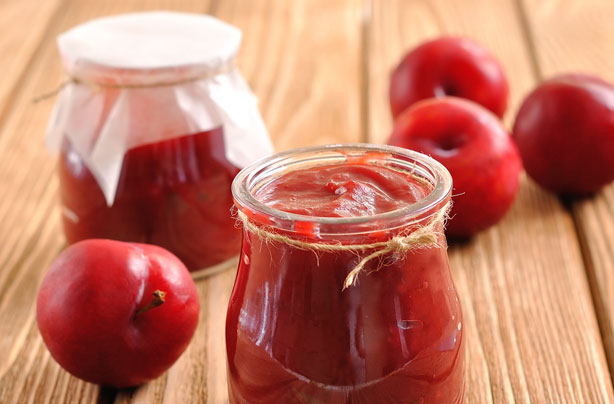
4. Spiced plum jam
This is the perfect preserve to use up a bunch of your autumnal fruit and plums to make a delicious spread and makes for a great foodie gift too.
Get the recipe: Spiced plum jam
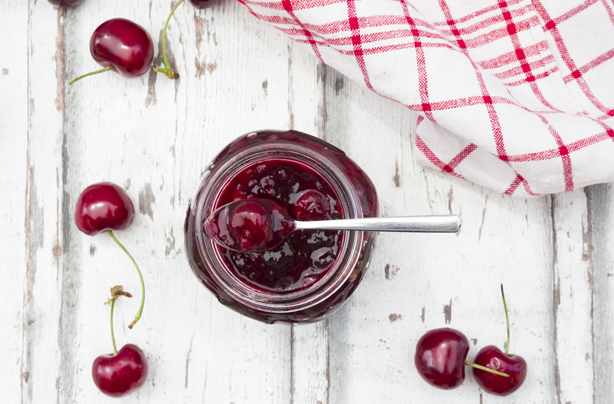
5. Cherry jam
This tasty chunky cherry jam is the ultimate preserve you must make. We love it on toast or spooned over thick Greek yogurt.
Get the recipe: Cherry jam

Andrew Gravett is a English-French chef who specialises in all things baking and pastries. Currently executive chef at The Langham hotel in London, his career has been inspired by his love for baking and his French mother's way of cooking. Andrew took himself off to Normandy in France where he was trained in pastry shops and soon developed a passion for the craft. Coming back to England, Andrew has worked in Michelin-starred restaurants and worked with household chocolate producer Valrhona. After taking some time out, Andrew felt the call of the kitchen once more and now has made his dream menu at The Langham and is in charge of one of the most famous afternoon teas in London.
Related features:
How to make afternoon tea cakes with Andrew Gravett

Christina Geggus is Junior Food Writer at Goodto.com and enjoys writing about lifestyle, food, and recipes. After completing her Master’s in Magazine Journalism at Nottingham Trent University and her undergraduate degree in Communication & Society and Global Studies alongside receiving an NCTJ diploma, Christina has always set her sights on a career in journalism.
- Rosie ConroyFood Writer